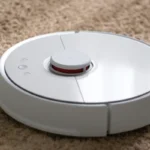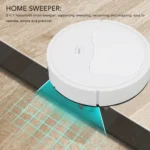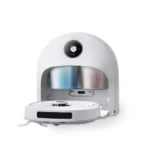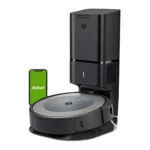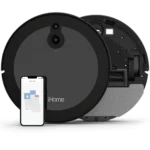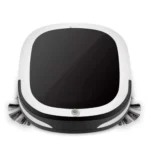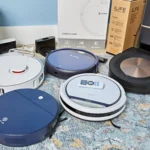Have you ever wondered how smart vacuums navigate around your house without getting stuck in corners or colliding with furniture? The answer lies in the advanced technology of sensors. These tiny devices play a significant role in the functionality of smart vacuums, enabling them to navigate around your home with ease and efficiency. But, what are these sensors, and how exactly do they work to improve smart vacuum navigation? In this article, we’ll explore the different types of sensors used in smart vacuums, their benefits and limitations, and the future of this exciting technology.
What are Sensors in Smart Vacuums?
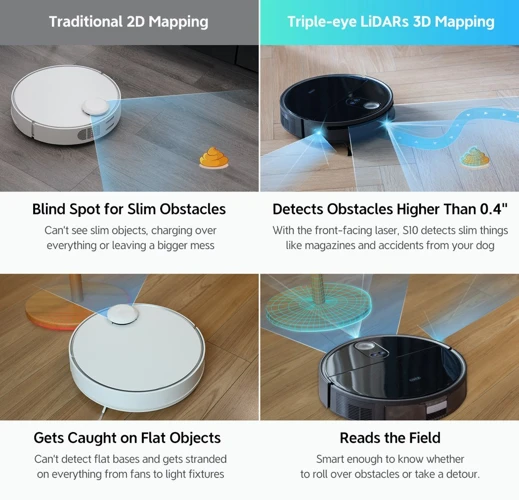
As technologies continue to advance, the cleaning industry is also seeing a significant transformation. One of the recent innovations is the introduction of smart vacuums, which are equipped with high-tech features such as sensors. These sensors are critical components that enable smart vacuums to navigate efficiently around the house, detect and avoid obstacles, map the cleaning area, and clean autonomously. In this section, we will explore in-depth the role of sensors in smart vacuums, their types, and functions. If you’re interested to learn about the benefits and limitations of other smart vacuum features, you can read our articles about voice control cleaning, self-emptying bins, remote control, smart app performance, and smart mapping technology.
Types of Sensors in Smart Vacuums
Smart vacuums utilize a range of sensors to detect and navigate through obstacles, map the cleaning area, and optimize their cleaning routes. Here are the most commonly used sensors in smart vacuums:
| Sensor Type | Description |
|---|---|
| IR Sensors | Uses infrared transmitters and receivers to detect obstacles and avoid collisions. These sensors work best for detecting walls, furniture, and other large objects. |
| Range Sensors | Utilizes ultrasonic or laser sensors to measure the distance between the vacuum and objects in the room. This helps the vacuum detect even small obstacles like toys or shoes. |
| Cliff Sensors | Detects elevation changes like stairs or drops. These sensors prevent the vacuum from falling off of edges or ledges. |
| Camera Sensors | Uses cameras to capture images of the cleaning area and detect obstacles. They can also help identify the position of the vacuum in the room. |
| Gyroscopic Sensors | Measures the rotation and orientation of the vacuum. When used in combination with other sensors, gyroscopic sensors can help smart vacuums navigate more accurately. |
| Bumper Sensors | Similar to IR sensors, these sensors detect collisions with obstacles. However, bumper sensors physically touch the object, which can provide more accurate feedback for the vacuum. |
Each type of sensor plays a crucial role in allowing smart vacuums to navigate seamlessly and clean efficiently. By using a combination of sensors, smart vacuums can rapidly adapt to changes in their environment and optimize their cleaning strategies. The continuous development of machine learning algorithms that incorporate real-time feedback from sensors, such as those discussed above, enables these vacuums to provide increasingly sophisticated cleaning experiences. To learn more about the role of machine learning in smart vacuums, read our article on smart vacuums and machine learning.
How Do Sensors Improve Navigation in Smart Vacuums?
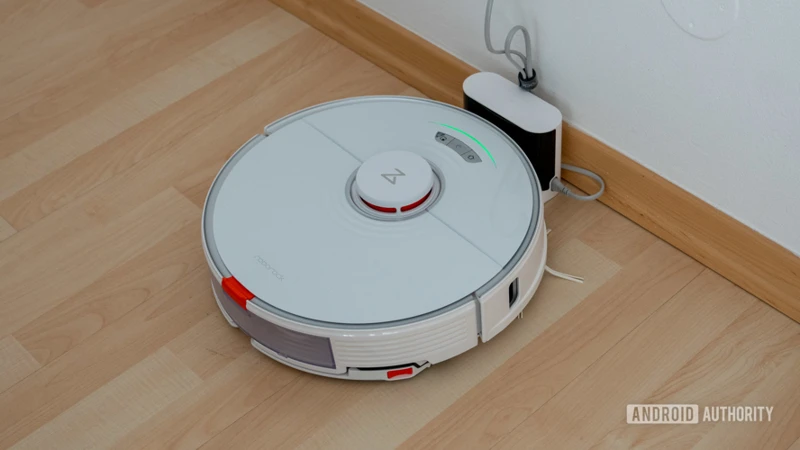
Smart vacuums have revolutionized the way we clean our homes, and one of the main reasons why they are so efficient is because of their advanced sensor technology. Sensors play a crucial role in enabling these devices to navigate through a space and detect obstacles that might be in their way. In this section, we explore the different types of sensors used in smart vacuums and how they work together to improve navigation. By understanding the key features of smart vacuum sensors, you’ll gain insight into why these devices are becoming increasingly popular in households around the world.
Obstacle Detection and Avoidance
Smart vacuums are equipped with sensors that help them detect objects and navigate around them effectively. These advanced sensors provide a significant improvement in the vacuum’s ability to operate efficiently and maintain optimal cleaning performance. Let’s take a closer look at how sensors can help with obstacle detection and avoidance:
1. Infrared Sensors: Infrared sensors are commonly used in smart vacuums to detect obstacles in their path. These sensors emit an infrared beam, and if the beam is interrupted by an object, the vacuum can detect the obstacle and either stop or change direction to avoid it.
2. Anti-Collision Sensors: Anti-collision sensors work similarly to infrared sensors, but instead of emitting a beam, they detect objects by using ultrasonic waves. These sensors help the vacuum detect obstacles that are nearby and reduce the likelihood of collisions.
3. Cliff Sensors: Cliff sensors are essential in preventing the vacuum from falling down stairs or ledges. These sensors are usually located on the bottom of the vacuum and use infrared or acoustic technologies to detect the floor’s height. When the vacuum approaches a ledge or stairs, the sensors will activate and signal the vacuum to move away from the danger.
4. Camera Sensors: Some of the newer smart vacuums on the market are equipped with camera sensors that can detect obstacles with greater accuracy. These sensors use computer vision algorithms to identify and avoid obstacles in their path by taking pictures and processing them in real-time.
The obstacle detection and avoidance capabilities provided by sensors in smart vacuums allow for more efficient and productive cleaning operations. By preventing collisions and reducing the need for manual intervention, sensors help to save time and effort for the user.
Mapping and Localization
Mapping and localization are key features that are made possible by the sensors in smart vacuums. With the use of sensors, these vacuums can not only detect obstacles and avoid them but also create a map of the layout of a room and localize their position with a high degree of accuracy.
1. Simultaneous Localization and Mapping (SLAM)
Smart vacuums equipped with SLAM technology use various sensors, such as cameras and lidar, to create a map of the room they are cleaning. SLAM enables the robot vacuums to keep track of where they have been and where they need to go next. This information is then used to calculate the most effective cleaning path.
2. Visual Mapping
Smart vacuums with visual mapping use a camera to take a snapshot of the room and then use computer vision algorithms to determine the layout of the room. The vacuum then uses this map to determine its location and the most effective cleaning path.
3. Lidar Mapping
Lidar mapping uses lasers to create a 3D map of the room. This technology is particularly effective at detecting obstacles and determining the layout of a room. Smart vacuums with lidar mapping can accurately detect and avoid furniture and other obstructions, providing a more thorough and efficient cleaning experience.
Mapping and localization features enhance the efficiency of smart vacuums by allowing them to navigate their surroundings with greater accuracy. As these technologies improve, we can expect even more advanced features to be added to smart vacuums, making them an even more useful and convenient addition to our homes.
Smart Cleaning Routes
Smart cleaning routes are another way in which sensors in smart vacuums improve navigation. By analyzing the layout of a room and the locations of obstacles, smart vacuums can create the most efficient cleaning route possible. This helps to minimize the amount of time the vacuum spends moving around the room, and maximizes the amount of ground it can cover in a single cleaning session.
Here are a few examples of the types of smart cleaning routes that sensors can help create:
- Spiral patterns: One common cleaning route involves creating a spiral pattern starting from the center of the room and spiraling outward. This is often the most efficient way to clean a circular or square room.
- S-curve patterns: Another common route involves creating an S-curve pattern through the room, which helps to clean wide open spaces efficiently.
- Edge cleaning: Vacuums with edge sensors can also follow along the edges of walls and furniture, creating a more thorough clean and ensuring dirt and dust is not left behind in harder-to-reach areas.
These smart cleaning routes help maximize the efficiency of the cleaning process and ultimately provide a more thorough clean. It’s important to note that not all smart vacuums will have the same cleaning route options, as it depends on the specific sensors and technologies used. However, by having a variety of options and the ability to adapt to different room layouts, smart vacuums can provide a more personalized cleaning experience.
Benefits of Smart Vacuum Sensors
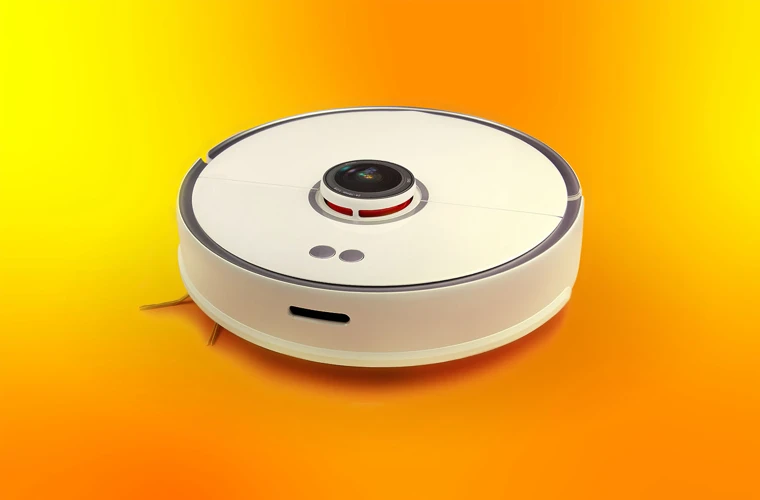
You may be wondering why sensors are such a vital component in smart vacuums. The truth is, these innovative devices are designed to make cleaning easier, faster, and more convenient. So what exactly are the benefits of smart vacuum sensors? Let’s dive into the details and explore the advantages they bring to the table. From increased efficiency to better cleaning performance, smart vacuum sensors are a game-changer in the world of household cleaning. Let’s take a closer look at how these advanced sensors elevate the cleaning experience.
Efficiency and Accuracy
One of the most significant benefits of sensors in smart vacuums is their ability to enhance efficiency and accuracy in cleaning. Smart vacuum sensors help the device to perceive and analyze the environment, allowing it to adjust its cleaning patterns accordingly. Here are some ways in which sensors promote efficiency and accuracy in smart vacuums:
- Targeted Cleaning: Sensors help the vacuum to detect and locate dirt and debris, allowing it to focus its cleaning efforts where they are needed most. This targeted approach saves time and energy and ensures that no spots are missed during cleaning.
- Auto-Adjustment: Smart vacuum sensors help the device to automatically adjust its cleaning settings based on the nature of the surface and the amount of dirt and dust present. For instance, the vacuum may increase suction power on carpets and reduce it on bare floors to maximize cleaning efficiency.
- Edge Cleaning: Smart vacuum sensors can detect edges and corners, enabling the device to clean along the edges of walls and furniture. This reduces the need for manual cleaning in these areas, saving time and effort.
- Obstacle Detection: With the help of sensors, smart vacuums can detect and avoid obstacles like furniture and walls. This prevents the device from getting stuck or causing damage, ensuring consistent and efficient cleaning.
The efficiency and accuracy provided by sensors in smart vacuums result in a more effective and thorough cleaning experience for users.
Convenience and Time-Saving
Smart vacuum sensors not only improve efficiency and accuracy of cleaning, but they also make the process incredibly convenient and time-saving for users. Here are some ways in which sensors contribute to convenience and time-saving in smart vacuums:
- No Manual Input Required: Smart vacuums employ sensors that allow them to automatically detect the environment and adjust cleaning settings accordingly. This eliminates the need for manual input from the user, saving them time and effort.
- Effortless Scheduling: Smart vacuum sensors also come equipped with scheduling features, which allow users to set the vacuum to clean at specific times or on certain days of the week. This means that users can schedule cleaning sessions to occur when they’re not at home, without the need for any manual intervention.
- Intuitive Control: Some smart vacuums come with companion apps that allow users to control and customize cleaning settings. These apps often feature intuitive controls and interfaces, making the process of controlling the vacuum easy and effortless. The sensors within the smart vacuum work to interpret user preferences, therefore being able to choose the correct settings with no relevant intervention from the user.
- Automated Recharging: Smart vacuums often come equipped with sensors that detect when the battery is running low, and automatically return to their charging dock to recharge themselves. This means that users don’t have to worry about manually recharging the vacuum or keeping an eye on battery levels, freeing up more of their time for other activities.
Smart vacuum sensors offer several benefits when it comes to convenience and time-saving. They eliminate the need for manual intervention, allow for effortless scheduling, and feature intuitive controls that make controlling the vacuum easy and efficient. With automated recharging capabilities, users can also rest easy knowing that their smart vacuum will take care of itself when it comes to power management.
Better Cleaning Performance
One of the most significant benefits of smart vacuum sensors is their ability to improve cleaning performance. By utilizing various sensors, smart vacuums can detect and target dirt, debris, and other particles in a more efficient and precise manner. Let’s take a look at some specific ways that sensors contribute to better cleaning performance:
1. Targeted Cleaning
Smart vacuums with advanced sensors can identify and target dirt and debris on specific areas of your floor. By using optical sensors or cameras, the vacuum can detect dirty spots and focus its cleaning efforts on those areas. Smart vacuums with depth sensors can measure the distance to the floor and adjust their cleaning settings automatically to ensure maximum cleaning effectiveness.
2. Improved Suction Control
Sensors in smart vacuums can also help to enhance suction control, which is essential for effective cleaning. By using sensors that measure the level of dirt and debris on the floor, the vacuum can adjust its suction power to provide the optimal cleaning performance. This means that the vacuum can use less suction on areas with less dirt while applying more suction on areas that require deeper cleaning.
3. Efficient Brush Management
In addition to suction control, smart vacuum sensors can also help manage brush performance. By detecting the type of flooring and the amount of debris on the floor, the vacuum can adjust the brush’s position and speed for optimal cleaning. This feature is especially useful for homes with multiple types of flooring or a mix of carpets and hard floors.
The use of sensors in smart vacuums has led to better cleaning performance and more efficient cleaning. Smart vacuums are capable of providing targeted cleaning, adjusting suction and brush control, and tackling multiple types of surfaces. As sensor technology continues to advance, we can expect even more significant improvements in cleaning performance for smart vacuums.
Limitations of Smart Vacuum Sensors
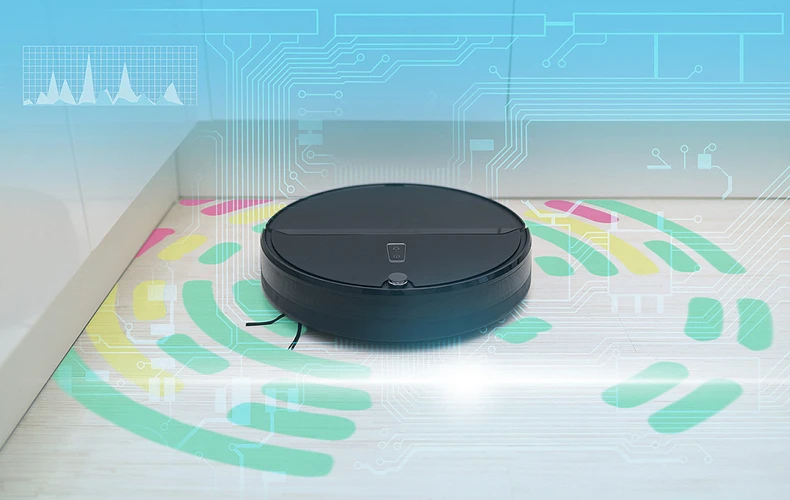
As with any technology, there are limitations to what smart vacuum sensors can accomplish. While these sensors have greatly improved the navigation capabilities of modern vacuums, there are still some obstacles that they may struggle to overcome. It is important to understand these limitations so that you can make an informed decision when selecting a smart vacuum for your home. Let’s take a closer look at some of the challenges that smart vacuum sensors may face.
Requires Clear Floors and Furniture
Smart vacuum sensors have improved cleaning performance by detecting and avoiding obstacles, mapping and localizing, and creating smart cleaning routes. However, these sensors have some limitations that may affect their efficiency and accuracy. One of these limitations is that smart vacuums require clear floors and furniture to work properly.
What Does “Clear Floors” Mean?
Clear floors mean that there should be no objects or obstacles in the way of the smart vacuum. Examples of obstacles include toys, shoes, cables or any other debris. While the sensors help the smart vacuums to detect and avoid obstacles, excessive clutter on the floor will cause the vacuum to malfunction, resulting in ineffective cleaning.
The Importance of Clear Furniture
Furniture plays an important role in ensuring that smart vacuums work effectively. Firstly, furniture should be arranged in such a way that there is enough space for the smart vacuum to maneuver. Secondly, furniture should be high enough to allow the vacuum to pass under it. For optimal results, the clearance height of your furniture should be at least 10 cm. If the clearance height is too low, the vacuum may not be able to pass under it and the cleaning performance will be affected.
| Clear Floors: Pros | Clear Floors: Cons |
|---|---|
| Cleaning is more efficient and accurate | Excessive clutter disrupts the functionality of the vacuum resulting in ineffective cleaning performance |
| Clear Furniture: Pros | Clear Furniture: Cons |
|---|---|
| Allows the vacuum to pass under the furniture for better cleaning performance | Furniture clearance heights should be at least 10 cm to allow for optimal performance |
Besides these limitations, some smart vacuums may also struggle with cleaning dark surfaces and stairs. However, the benefits of smart vacuum sensors far outweigh their limitations. With increased research and development, it is expected that future smart vacuum sensors will be able to overcome most if not all of these challenges.
May Struggle with Dark Surfaces and Stairs
Smart vacuum sensors have a few limitations, including difficulties with dark surfaces and stairs. While modern smart vacuums have advanced navigation systems, dark surfaces can pose a challenge for their sensors. This is because the sensors often rely on light to detect edges, drop-offs, and obstacles in their path. In the case of dark surfaces, the sensors may not be able to detect these features as easily, which can lead to less effective cleaning.
Moreover, stairs can also be a problem for some smart vacuums. While some models come equipped with sensors that detect stair edges, others may not have this feature, which can make them more prone to falls. This is especially true for homes with dark-colored stairs, as the sensors may struggle to detect the edges and keep the vacuum from tumbling down.
To mitigate these limitations, some manufacturers have developed solutions such as adding extra sensors or using cameras that can detect stairs and dark surfaces more easily. Another solution is to use manual controls to direct the vacuum and ensure that it avoids any potential hazards.
Despite these limitations, smart vacuum sensors continue to improve at a rapid pace, with manufacturers investing heavily in research and development. As a result, it is likely that these limitations will continue to decrease over time, making smart vacuums even more effective at cleaning homes of all types.
Future of Smart Vacuum Sensors
As technology continues to advance, the future of smart vacuum sensors holds great promise for revolutionizing the cleaning industry. There are already several exciting advancements in the works that will make it easier and more efficient for smart vacuums to navigate our homes.
Artificial Intelligence Integration: One of the most exciting developments in the future of smart vacuum sensors is the integration of artificial intelligence. This means that smart vacuums will be able to learn from their surroundings, adapt to changing conditions, and even make decisions based on situational context. For example, they will be able to identify different types of surfaces and adjust their cleaning patterns appropriately, or recognize when a room is cluttered with furniture and avoid obstacles more efficiently.
Improved Mapping and Localization: Another area of focus for smart vacuum sensor development is improving the accuracy and efficiency of mapping and localization technologies. By using advanced computer vision and LIDAR mapping, these sensors will be able to create much more detailed maps of homes, identify where they are located in those maps, and navigate to specific locations with greater precision.
Better Obstacle Detection: Smart vacuum sensors are also likely to get better at detecting and avoiding obstacles in the future. While current sensors are quite good at avoiding static objects like walls and furniture, they can struggle with identifying moving objects such as pets or children. Future sensors will likely be able to detect and avoid these objects with greater accuracy and precision, making them safer to use in busy households.
Multi-Functional Sensors: Finally, future smart vacuum sensors will likely become more versatile and multi-functional. Rather than being restricted to a single purpose, such as obstacle detection or localization, they will be able to perform multiple functions at once. For example, a sensor that can detect both obstacles and the type of surface being cleaned would be able to create more accurate and efficient cleaning paths.
The future of smart vacuum sensors is looking bright, with many exciting developments expected to transform the cleaning industry in the years to come. With the integration of artificial intelligence, improved mapping and localization, better obstacle detection, and more versatile sensors, smart vacuums will become more effective, efficient, and safer to use than ever before.
Conclusion
In conclusion, smart vacuum sensors have revolutionized the cleaning industry by introducing technology that simplifies house cleaning, saves time, and improves cleaning performance. These sensors have not only made it easier to clean the house but also ensures that cleaning is done efficiently and effectively.
With obstacle detection and avoidance, smart vacuum sensors can easily detect obstacles and avoid them, allowing the vacuum to navigate around furniture and other obstructions with ease. Additionally, sensors also provide mapping and localization that enables the vacuum cleaner to create a detailed map of the entire house, understand the layout, and develop efficient cleaning routes.
Furthermore, the smart cleaning routes provided by sensors are more optimized and strategic than traditional cleaning methods, ensuring that every corner of the house is cleaned effectively. This means that homeowners can confidently schedule cleaning even when they are not around.
In terms of benefits, smart vacuum sensors are unbeatable. They offer efficiency and accuracy in cleaning, which means that cleaning is done quickly and effectively, leaving the house spotless. Sensors also save time, allowing homeowners to engage in other productive activities. Moreover, their convenience and time-saving nature is perfect for busy people and those with mobility challenges.
Finally, smart vacuum sensors offer better cleaning performance than traditional vacuum cleaners. With advanced features such as mapping, localization, obstacle detection, and avoidance, the sensors ensure that corners, edges, and hard-to-reach areas are thoroughly cleaned. This means that homes are cleaner and healthier for the occupants.
While smart vacuum sensors have limitations such as requiring clear floors and furniture and struggling with dark surfaces and stairs, the future looks promising. Newer models of smart vacuum cleaners are constantly being developed with advanced features that overcome these limitations. These improvements guarantee that smart vacuum sensors will become more accessible to all homeowners.
In conclusion, smart vacuum sensors are a game-changer in the cleaning industry. Their efficiency, accuracy, and time-saving nature make house cleaning a breeze. As technology improves, we can expect these sensors to become more sophisticated and even more accessible to all homeowners.
Frequently Asked Questions
What is the function of a smart vacuum?
A smart vacuum is a device that automatically cleans floors, saving time and effort while achieving better cleaning results than traditional vacuums.
How do smart vacuum sensors work?
Smart vacuum sensors use various technologies to detect obstacles, map rooms, and create efficient cleaning patterns. These sensors can include infrared sensors, lasers, cameras, and more.
Do all smart vacuums have sensors?
Not all smart vacuums have sensors, but those with sensors do offer improved navigation and cleaning capabilities compared to those without.
Can smart vacuum sensors damage furniture?
No, smart vacuum sensors are designed to detect and avoid obstacles, including furniture, to prevent any damage.
How long does it take for smart vacuum sensors to map a room?
The time it takes for smart vacuum sensors to map a room can vary depending on the size and complexity of the space. Some sensors can map a room in just a few minutes, while others may take longer.
Do smart vacuum sensors work on all floor types?
Sensors can work on most floor types, but some may struggle with dark or reflective surfaces. Some sensors may also have difficulty navigating stairs.
Can smart vacuum sensors detect pet hair?
Yes, some sensors are designed to detect pet hair and other small debris, helping to achieve better cleaning results.
What is the benefit of using smart vacuum sensors?
The use of sensors in smart vacuums can improve navigation, efficiency, and cleaning performance, resulting in more convenient and effective cleaning.
How do smart vacuum sensors help to save time?
By creating efficient cleaning patterns, smart vacuum sensors can help to save time by reducing the need for manual oversight and reducing cleaning time.
What is the future of smart vacuum sensors?
The future of smart vacuum sensors is likely to bring even more advanced technologies, allowing for even more efficient and effective cleaning results.

